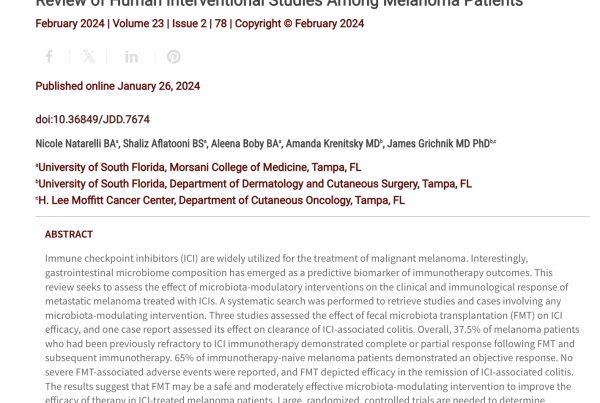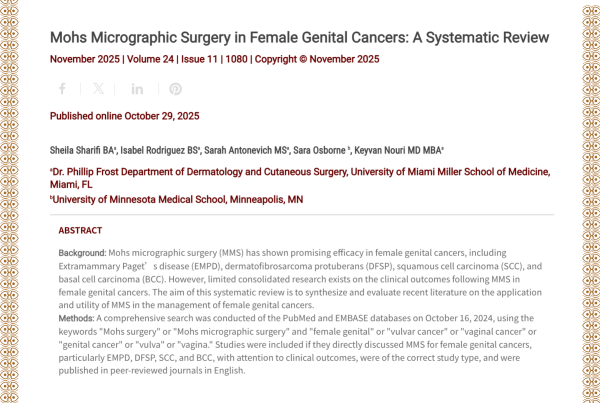Skin Cancer Supplements
Skin Cancer in Hispanics in the United States
The Hispanic population in the United States has reached nearly 58 million in 2016 and has been the principal driver of U.S. demographic growth, accounting for half of national population growth since 2000. In 2016, Hispanics accounted for 18% of the nation’s population and were the second-largest racial or ethnic group behind whites making the people of Hispanic origin the nation’s largest ethnic or racial minority.1The projected Hispanic population of the United States is 119 million by 2060. According to this projection, the Hispanic population will constitute 28.6 percent of the nation’s population by that date.2 Hispanics are the youngest major racial or ethnic group in the United States. About one-third, or 17.9 million, of the nation’s Hispanic population is younger than 18, and about a quarter, or 14.6 million, of all Hispanics are Millennials (ages 18 to 33 in 2014), according to a Pew Research Center analysis of U.S. Census Bureau data. The Hispanic population within the United States is younger than the Caucasian population. Fifty-seven percent of Hispanic married-couple households had children younger than 18 present in 2014, whereas for the nation it was 40.1 percent.3 This population is made of 64% born within the U.S. and 36% immigrants.1 Hispanics of Mexican origin account for 63.3% (36 million) of the nation’s Hispanic population in 2015, by far the largest share of any origin group, but down from a recent peak of 65.7% in 2008. Another 9.5% were of Puerto Rican background, 3.7% Cuban, 3.7% Salvadoran, 3.3% Dominican, and 2.4% Guatemalan.4 The five states that have the largest concentration of Hispanics are California, Texas, Florida, New York, and Illinois. Nearly half of all Hispanics live in California and Texas. Fifteen million live in California, 10.4 million in Texas, 4.2 million in Florida, 3.4 million in NY, and 2 million in Illinois.5
Discover More Skin Cancer Research
Superficial Radiation Therapy: A Viable Nonsurgical Option for Treating Basal and Squamous Cell Carcinoma of the Lower Extremities
Superficial radiation therapy (SRT) is a nonsurgical method of treating basal cell carcinoma (BCC) and squamous cell carcinoma (SCC) lesions on the lower extremities of older individuals that might otherwise suffer complications or prolonged healing following surgical intervention. Objective: The goal of this study was to evaluate the effectiveness of SRT for treating BCC and SCC lesions on the lower extremities of elderly patients in an outpatient clinic setting. Methods and Materials: A retrospective review was performed using data from consecutive patients with BCC and SCC on their lower extremities and were treated with SRT.
Skin Cancer Prevention: A Review of Current Oral Options Complementary to Sunscreens
The incidence of non-melanoma skin cancer (NMSC) is dramatically increasing worldwide, despite the increased use of improved sunscreens. In 2014, the Surgeon General estimated that 2.2 to 5.0 million people are treated annually for NMSC.1-3 For decades, recommendations for sun protection have remained insufficient; subsequently, the numbers of newly diagnosed skin cancers continue to rise, and there is a need for additional preventative measures beyond sunscreens. The objective of this article is to review current oral prescription medications as well as supplements that may play an important role in skin cancer prevention.
Cosmetic Versus Medicine: How Does Your Country Define Sunscreen?
Skin cancer (melanoma and non-melanoma) is the most commonly diagnosed cancer in the United States,1,2 with melanoma being responsible for over 9000 US deaths annually. Melanoma is the 3rd most diagnosed cancer in Australians,3 and non-melanoma skin cancer is the most common cause of Australian cancer-related hospitalizations, representing a major health-care cost burden.4 Primary and secondary skin cancer prevention is globally inadequate,5 with only 3 in 10 American adults using sun protection routinely.6Internet purchasing of sunscreen products is possible for consumers worldwide. However, countries have unique sunscreen regulations. Sunscreen products purchased internationally may not meet standards required by the consumer’s respective local regulation. This can create confusion for consumers who do not understand the differing international regulations.
Facial Basal Cell Carcinoma in Patients Younger Than 40
The incidence of basal cell carcinoma in the population younger than 40 years is rising, and a majority of basal cell carcinomas occur on the head and neck. Our objective was to determine whether basal cell carcinomas in the population younger than 40 years occur more frequently at the forehead and its subunits (forehead proper, temple, suprabrow, and glabella). Methods: We performed a retrospective case review of 4,337 basal cell carcinomas in 3,223 patients treated with Mohs micrographic surgery. Results: Patients younger than 40 showed 2.2 fold increased odds of developing BCC at the forehead. Being younger than 40 was associated with more than 2.5 times higher odds of developing BCC at the forehead proper and 2.0 times higher likelihood of developing BCC at the temple. Females were associated with 3.8 fold higher odds of developing BCC at the glabella; however, they were less likely to develop BCC at the temple. Discussion: There may be underlying differences in the pathogenesis and natural history of basal cell carcinoma in the younger population, and between males and females; alternatively, lifestyle factors may also play a role.
Demographic and Tumor Characteristics of Patients Younger Than 50 Years With Nonmelanoma Skin Cancer Referred for Mohs Micrographic Surgery
Nonmelanoma skin cancer (NMSC), including basal cell carcinoma (BCC) and squamous cell carcinoma (SCC), is the most common malignancy in Caucasian populations worldwide. However, because NMSC are typically not reported to national and state registries, the exact incidence rates are unknown and are likely underestimated. In the United States, it is estimated that over 5.4 million cases of NMSC are treated in more than 3.3 million people annually and that the incidence is increasing each year.
Dermatologist Practices During Total Body Skin Examinations: A Survey Study
Though screening for skin cancer is an essential practice in dermatology, limited data are published on dermatologists’ total body skin examination (TBSE) behaviors. We surveyed 6500 dermatologists on their TBSE practices, including questions about less commonly examined body sites. We found varied TBSE practices among all dermatologists and discrepancies in examinations between dermatologists of opposite genders.
Sponsored
Podcast Episodes
Variations in Skin Cancer Screening Practices Among Dermatologist
In this edition of the JDD podcast “Ask the Investigator,” host Dr. Adam Friedman from the GW School of Medicine and Health Sciences is joined by Dr. Evan Rieder, Assistant Professor of Dermatology at NYU Langone Medical Center and one of the few dermatologists double board certified in dermatology and psychiatry in the U.S., to discuss his recent study entitled “Dermatologist Practices During Total Body Skin Examinations: A Survey Study.” Do we all do it the same? Are we all checking every nook and cranny? Do we need better standardization for our greatest weapon to enable early and life saving skin cancer detection? Call me crazy, but this is pretty…..preeeetty… pretty important (as Larry David would say).
Case Reports
Basal Cell Carcinoma in the Nasal Vestibule
Basal cell carcinomas (BCC) arise from DNA damage to cells of the basal layer of the epidermis and most commonly in areas of the skin exposed to sunlight or ultraviolet radiation. BCC is the most common skin cancer seen in humans with over 4.3 million cases reported in the United States and is responsible for 3-10% of all cancers annually. We report what we believe to be the first case of this very prevalent skin cancer arising in the nasal vestibule. The lesion was treated with Mohs micrographic surgery and required three stages to obtain histological clearance. Given the location of the tumor, Mohs surgery was chosen due to the procedure’s effectiveness for achieving the highest cure rate with the lowest incidence of tumor recurrence and for preserving as much adjacent healthy tissue as possible
Combination Topical Chemotherapy for the Treatment of an Invasive Cutaneous Squamous Cell Carcinoma
Standard of care for squamous cell carcinoma (SCC) is usually surgical, with either excision or Mohs micrographic surgery. However, surgery may not be ideal for elderly patients with numerous lesions, who are poor surgical candidates or who refuse surgery. Topical 5-fluorouracil (5-FU) and imiquimod have been studied off-label as monotherapies in the treatment of SCC in situ with promising results. However, long-term tumor-free survival rates are still less than with surgical management.
.
Recurrent Squamous Cell Carcinoma Arising Within a Linear Porokeratosis
Here we report a case of linear porokeratosis with recurrent malignant degeneration to squamous cell carcinoma (SCC) recurring six years after excision of initial SCC. A 79-year-old woman presented with a friable tumor located within a longstanding lesion on her posterior thigh. Six years prior, she was diagnosed with SCC arising within the same lesion, which had been surgically excised with negative margins. Physical examination revealed a 3.5 x 2.7 cm friable tumor on the left proximal posterior thigh.
Sponsored
Sponsored
JDD Blog










